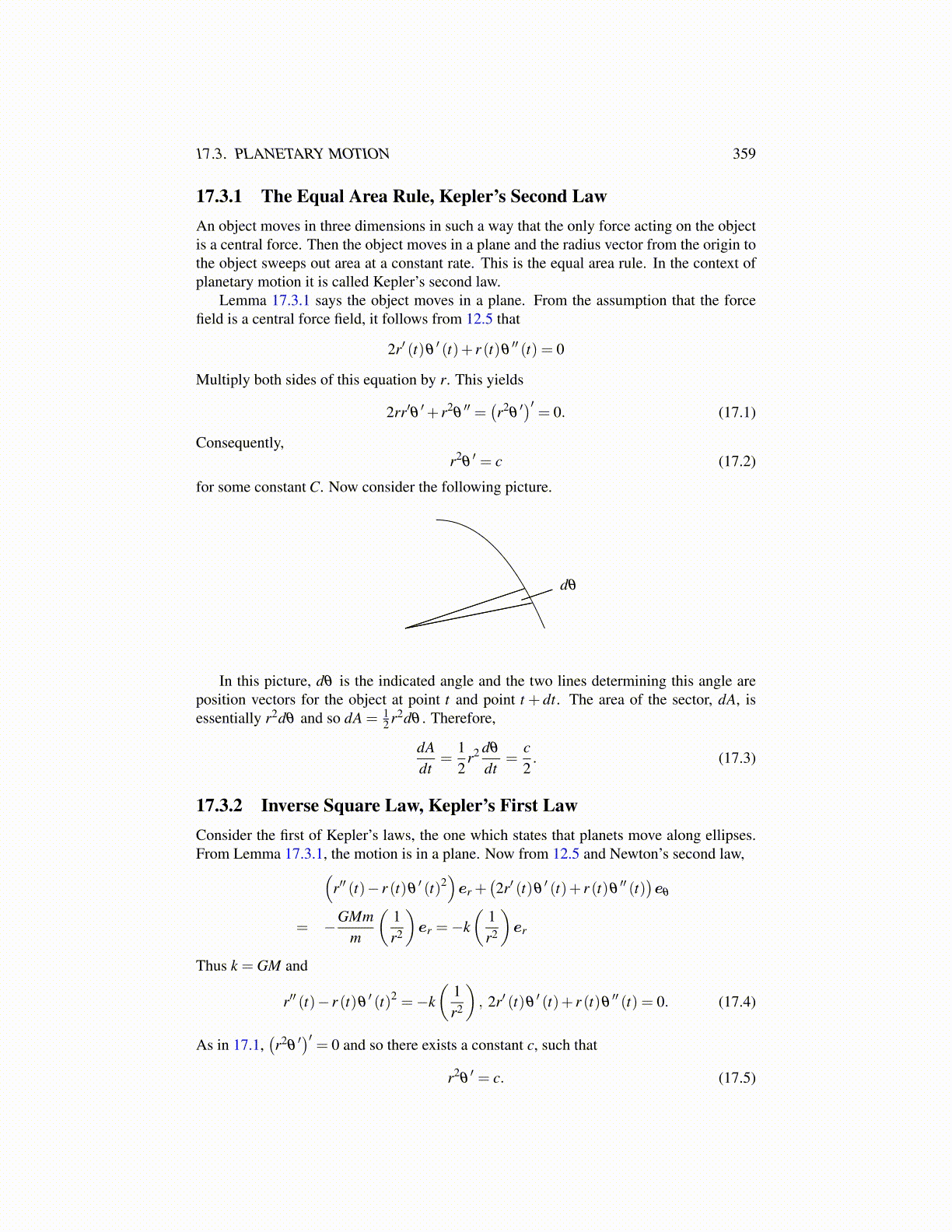
17.3. PLANETARY MOTION 359
Multiply both sides by dRdθ
. Then using the chain rule,
12
ddθ
((dRdθ
)2
+R2
)= 0
and so( dR
dθ
)2+R2 = δ
2 for some δ > 0. Therefore, there exists an angle ψ = ψ (θ) suchthat
R = δ sin(ψ) ,dRdθ
= δ cos(ψ)
Since( dR
dθ
)2+R2 = δ
2,( 1
δ
dRdθ, 1
δR)
is a point on the unit circle. But differentiating, the firstof the above equations,
dRdθ
= δ cos(ψ)dψ
dθ= δ cos(ψ)
and so dψ
dθ= 1. Therefore, ψ = θ +φ . Choosing the coordinate system appropriately, you
can assume φ = 0. Therefore,
R = ρ − kc2 =
1r− k
c2 = δ sin(θ)
and so, solving for r,
r =1(
kc2
)+δ sinθ
=c2/k
1+(c2/k)δ sinθ=
pε
1+ ε sinθ
whereε =
(c2/k
)δ and p = c2/kε. (17.10)
Here all these constants are nonnegative.Thus
r+ εr sinθ = ε p
and so r = (ε p− εy). Then squaring both sides,
x2 + y2 = (ε p− εy)2 = ε2 p2 −2pε
2y+ ε2y2
And sox2 +
(1− ε
2)y2 = ε2 p2 −2pε
2y. (17.11)
In case ε = 1, this reduces to the equation of a parabola. If ε < 1, this reduces to theequation of an ellipse and if ε > 1, this is called a hyperbola. This proves that objectswhich are acted on only by a force of the form given in the above example move alonghyperbolas, ellipses or circles. The case where ε = 0 corresponds to a circle. The constantε is called the eccentricity. This is called Kepler’s first law in the case of a planet.
17.3.3 Kepler’s Third LawKepler’s third law involves the time it takes for the planet to orbit the sun. From 17.11 youcan complete the square and obtain
x2 +(1− ε
2)(y+pε2
1− ε2
)2
= ε2 p2 +
p2ε4
(1− ε2)=
ε2 p2
(1− ε2),